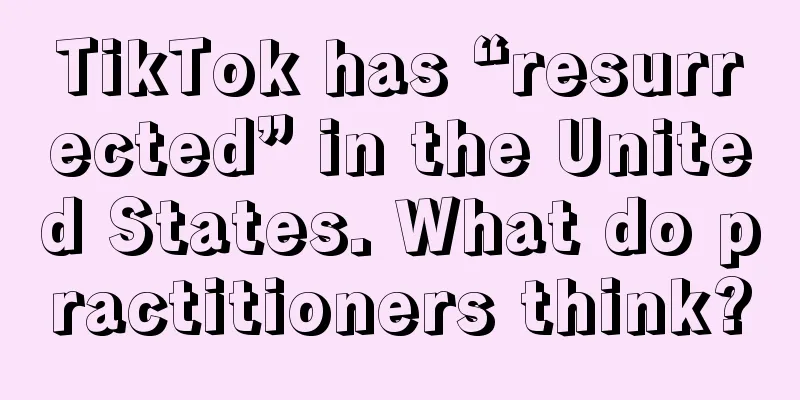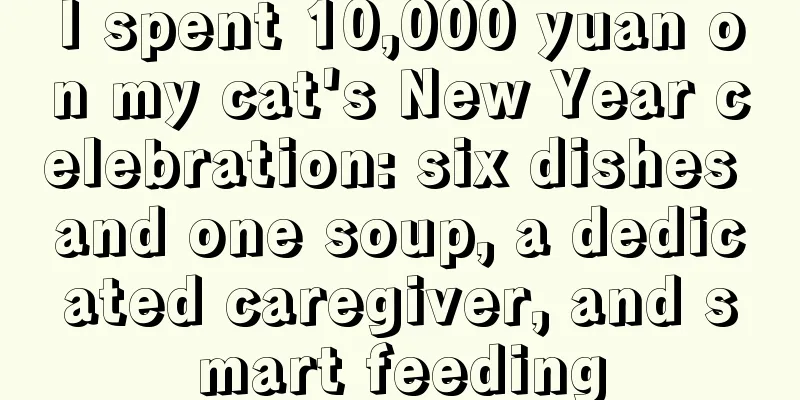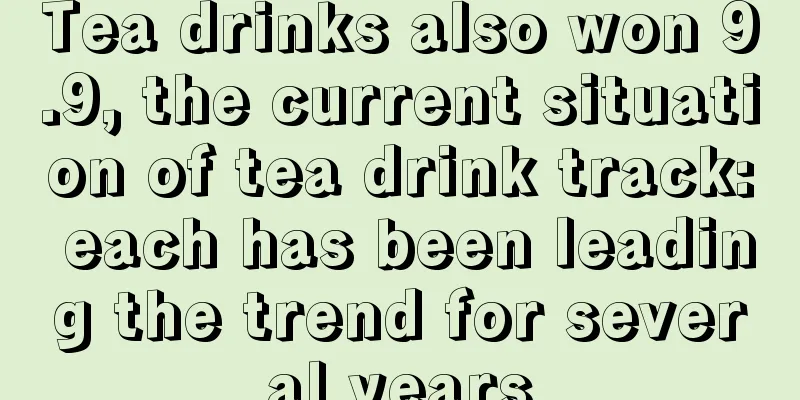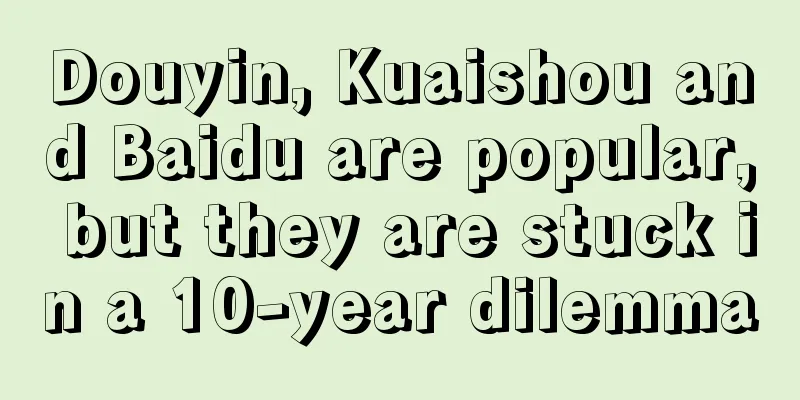Celebrating the festival or facing a "disaster", how can holiday marketing escape the dilemma of opening blind boxes?

With the influx of brands, today's holiday marketing seems to have fallen into blindness and involution. Competition in major festivals is fierce, while unpopular festivals have no effect. Many holiday marketing campaigns have become somewhat "self-contained". “Without hot spots, there is no traffic”. Holiday marketing must focus on hot spots and communication, and hot spots often come from users’ discussions and interactions on topics. Therefore, how to leverage or even create momentum around holiday hot spots in social media has become a compulsory subject for brand holiday marketing. In this process, if you want to achieve differentiation, you must distinguish the characteristics and social sentiments of popular festivals and niche festivals, and formulate corresponding marketing strategies, so that users can feel the uniqueness of the brand through "taking advantage of the momentum" and "creating momentum". 1. The whole nation celebrates the festival and creates a brand-specific “hot search physique”Whether it is traditional festivals such as the Spring Festival and Dragon Boat Festival, or Western festivals such as Christmas and Halloween, these popular festivals are themselves "super IPs" and brand levers. If used skillfully, they can bring huge traffic to the brand. But the problem is that consumers are becoming more and more rational. When all brands are competing for the popularity of mass festivals, the overwhelming festival marketing activities make consumers' threshold of excitement higher and higher. How should brands create their own hot search physique and form a grass-planting effect? 1. Grasp the "little emotions" of the public during festivals and stimulate emotional resonanceHoliday marketing is done every year, but not many of them can truly touch people. Compared with the brand's "scratching the surface" marketing actions, finding resonance in social emotions has become a way to establish deep connections with the brand. For example, the micro-film "Let's Get It Back Together" produced by Mengniu during the Spring Festival focused on a story about "unemployment at the end of the year." In order to hide the news of her layoff from her mother, a young unemployed girl embarks on a "journey to find milk". This story does not revolve around the usual "reunion" during the Spring Festival, but instead tells a story about a family's search that begins because of a "resignation letter". "Unemployment" is the most discussed heavy topic among young people on Weibo in the past two years. Mengniu used "unemployment" as the key clue to arouse the sympathy of users, and then completely reversed the sad atmosphere with the pursuit of a family, showing the warm side of the times. It can be seen that by breaking the traditional festival atmosphere and grasping the connection between social emotions and brands, it can trigger strong resonance among users, turning "I say and you listen" into a "heart-to-heart talk" between the brand and the user, and ultimately allowing the brand and the user's emotional memories of the festival to intertwine and expand the boundaries of potential consumer groups. 2. Playing with memes during festivals is a common expression among young peopleHow should brands understand today's young people and find out their favorite way of expression? An effective way is to gain insight into group behavior on social platforms and create common expressions. For example, "single dog" is a collective catharsis of single young people. Behind this expression actually lies the loss and self-mockery of single people. Therefore, moderate "reverse" marketing during popular festivals can make young people feel that "the brand understands me", which can not only stimulate young people's desire to play jokes and express themselves, but also narrow the distance between the brand and young people and arouse their empathy. Luckin Coffee has targeted single users on Valentine's Day for two consecutive years. From "Lonely Frog" to "Striped Puppy", it has set off a wave of meme craze, becoming the "east wind" that drives the brand's marketing activities to go viral and allowing the brand to stand out in the marketing involution of Valentine's Day. 3. Go deep into the festival scene and grasp the grass-roots effect behind the sense of ceremonyEvery festival has its own unique sense of ritual, and every brand has its own festival effect. By finding the connection between the brand itself and the festival's sense of ritual, and combining it with hot topics in a differentiated way, you can find the "grass-planting code" for the product. "Giving gifts" is the most typical ritual behavior. According to the "2023 New Trends in Holiday Marketing" report released by Weibo and the Thermal Power Research Institute, 47.89% of users choose to learn about gift information on Weibo. For example, under the "blessing" of hot topics such as #520# and #520礼品#, female users on Weibo have discussed and shared topics related to Valentine's Day gifts. Under this premise, Tiffany chose to strongly bind itself with #520礼品#. Netizens who click on the topic will see Tiffany's 520 global limited edition gifts and purchase jump links in the third place, using hot spots to maximize exposure and plant grass needs. In summary, from the selection of topics to the creation of reverse memes, and then to finding the connection between the brand and the sense of ritual, only by achieving unique differentiation can a brand have a unique "hot search physique." 2. Scenario-based and emotional resonance, small festivals can also become big hot spotsNowadays, the boundaries between festivals are gradually blurring. In addition to popular festivals, niche festivals such as the 24 solar terms and World Pain Relief Day also reflect changes in user needs in segmented fields. These festivals often have unique scene connotations and social significance, which can help brands reach the hearts of target consumers more vertically and deeply and find unique marketing entry points. A typical example is Pepsi, which incorporates the brand's cooling and heat-relieving properties into the summer solstice scene. When users browse topics or posts related to the summer solstice on Weibo, the brand concept of "Pepsi is enough for the summer" is frequently displayed, which associates Pepsi with coolness in the user's mind, thereby constantly stimulating the user's cognition and forming the inertial thinking of "Drink Pepsi in the summer". In addition to the 24 festivals that are popular in national trends and seasonal scenes, niche festivals related to social issues such as World Pain Relief Day and World Sleep Day are also good choices for brand festival marketing. Such festivals are often related to the focus of public attention such as health, which can easily trigger emotional resonance among users. For example, Babycare launched the #Only 30% of mothers in my country use painless childbirth# topic during World Pain Relief Day, targeting Weibo users' concern for women's health. Under the topic, not only mothers shared their feelings about childbirth, but also many other users and media joined the discussion, allowing the brand to be at the center of social issues and quickly radiate to users from different circles. At the same time, the focus on the pain points of the female group has awakened the emotional identification of young mothers and created a unique sense of belonging to the brand. Many mothers have posted articles under the topic to express their recognition of the brand concept. It can be seen that niche festivals should find unique connection points with social issues or social emotions, so that users can empathize with the brand's marketing activities, enhance their identification and sense of belonging to the brand, and ultimately become loyal fans of the brand. 3. Create a festival on your own to create a shared memoryIn addition to leveraging existing festivals, brands have also chosen to create their own festivals to create unique holiday memories. However, many brands have neglected user participation and interaction in the process of creating festivals, and have fallen into a dead end of "encircling their own territory and having fun". To solve this problem, we first need to create a topic or a meme as an outlet, and this outlet should be generally recognized and welcomed by users. Then, it can be spread and amplified through social platforms, and eventually upgraded to a "festival" in the discussion of the whole nation. For example, KFC personally created the topic of "Crazy Thursday", allowing users to spontaneously create a unique atmosphere of playing with memes on Crazy Thursday. Under the influence of this atmosphere, every Thursday, users will unconsciously think of KFC's memes and promotions. This stimulates consumer behavior and ultimately improves the brand's conversion effect. In addition to creating memes, creating a common experience is also an effective means of "creating a festival." Different consumer groups have different lifestyles. Capturing the common daily lives of target consumers and letting the brand participate in them is another entry point for brands to create festivals. This approach can better inspire consumers to emotionally identify with the festival, allow consumers to participate in festival activities, and strengthen the interaction between the brand and target users. The "Baby Theme Month" created by Feihe on Weibo is a good example. The brand created an opportunity to interact with mothers through Weibo. KOLs in the maternal and infant vertical categories on Weibo will produce customized content in conjunction with Feihe to attract mothers' attention, share baby-raising knowledge and daily life, and create a common memory between the brand and mothers. Creative forms such as customized fun stickers and rewarded interactions on Weibo have increased the fun of interactions among mothers, making the "Baby Theme Month" a node for mothers to socialize. During the interaction, Feihe has subtly integrated into the daily lives of mothers, deepening the sense of companionship and improving user stickiness. The essence of creating a festival is to create a hot topic and a periodic memory point. Whether this memory point is a joke, an experience or a discount, the key is to let users participate in the festival activities. Only in this way can the brand mobilize users' desire to express themselves and maintain long-term discussion enthusiasm. 4. Final ThoughtsUltimately, the core of brand holiday marketing is to make yourself a holiday hotspot. Only by becoming a hotspot can you be seen by users among a number of brands. In the process of becoming a hot topic, we should differentiate ourselves by leveraging existing festivals to trigger emotional resonance among consumers; when creating our own festivals, we should let users participate in discussions on festival topics and avoid talking to ourselves. Only by letting users and brands celebrate the festival together can we make the festival hot spots leave an impression in the minds of users and achieve long-term continuation of brand popularity. Author: Dake; Editor: Ji Nan Source: TopKlout (ID: TopKlout), a self-media ecological observation account that combines good-looking and informative content |
<<: Why does marketing to women always fail?
Recommend
How to cancel a paid order on eBay? How to choose products?
eBay is quite popular now, so some merchants will ...
Why is eBay shipping costing hundreds of dollars? Is eBay shipping cost estimated by the seller?
When shopping, eBay is one of the online shopping ...
The breaking effect of high-quality long videos
In the era of short videos, it is not uncommon to ...
Douyin’s new e-commerce function also says “no” to low-price competition!
The "price-breaking risk" warning interc...
More and more people are willing to pay for emotions
This article explores the importance and practical...
Preparations for Double 11 are advanced, and e-commerce bids farewell to the "ROI-only theory"
This article introduces the new strategies of e-co...
How to promote products on Douyin?
When it comes to grass-roots marketing, we love an...
How to fill in the Amazon address? Any suggestions?
As the world's largest cross-border e-commerce...
The plastic turtle in the live broadcast room controls young people
The live broadcast room of "opening turtles&q...
Will Amazon's main SKUs be promoted? What is the purpose of SKUs?
SKU is a very good tool for merchants, which can b...
New consumption has lowered its profile, and popular brands are moving towards high-end?
With the changes in the current consumer environme...
Don’t let sales ruin the brand you worked so hard to build!
In the journey of brand building, short-term sales...
What does Shopee's delivery days mean? What are the requirements?
When operating a store on the Shopee platform, you...
What are the best sellers on Amazon Australia? How to choose?
As we all know, Amazon Australia is a very large m...
"I will never tell you" There is also such a password to increase fans
Xiaohongshu's April fan growth list is out, wi...




![6 popular article templates on Xiaohongshu|Just follow them [Industry templates V1.0]](/upload/images/67e70a1405e25.webp)




